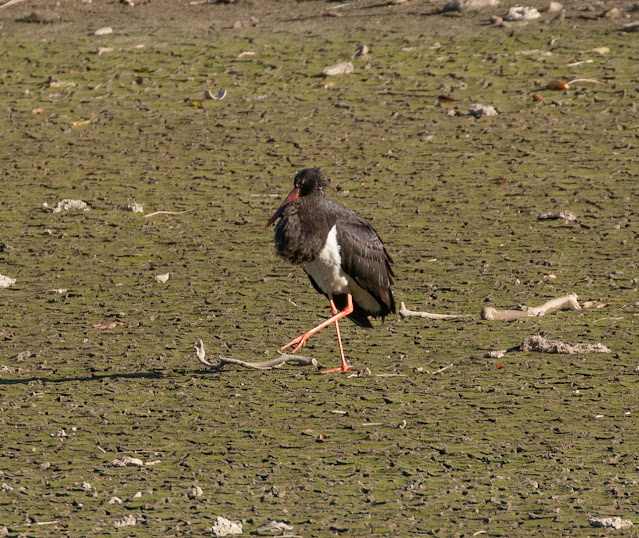I wonder how much money I could have saved by not having gone for a rare which later turned up in Kansai. Better not think about it I suppose. Right now there's a Song Thrush in Osaka which would have saved a drive to Kanagawa and a Black Stork in Wakayama which would have saved a drive to Kyushu.
Let's contrast a 200km round trip with no toll roads Black Stork, with a 1,200km round trip on mostly toll roads Black Stork. And that there were two Storks at Isahaya does not make that trip doubly worthwhile. No contest really; oh for a crystal ball! Last December it was a trip to Choshi for Yellow-bellied Tit, another 1,200km round trip, and immediately after that a bird turns up in Osaka. But you've got to go, haven't you? Now, I'm considering what the odds of a Bald Eagle turning up in Kyoto might be...? Exactly. Another trip to Hokkaido looms large in my near future, me thinks. Well, assuming the bird comes back this winter.
Anyway, I heard about this Stork about three weeks after it had arrived and drove down at the first opportunity. The aim was to get on site (just south of Wakayama city) for dawn, on what turned out to be the then coldest night of the winter so far; roadside gauges consistently registered zero degrees.
After getting advice on where best to park from people already there, I walked back to the almost dry reservoir. Heading upstream from the dam end into the strong, low sun, made it difficult to see whether the Stork was present or not. It hadn't seemed to be when I'd driven a couple of circuits earlier. I had no idea where it roosted, what time it came in, or even whether it did come every day. The Kyushu Storks could be very difficult to connect with so I didn't think of this bird as nailed-on. On the other hand, perhaps it roosted on the reservoir and never left?
I needn't have worried, two thirds of the way along I saw the bird drop in up ahead, it was still necessary to get right up to the far end to have the light at a better angle to see the bird well. I don't know whether the it had flown in from the surrounding hills or up from the deep stream bed running through the centre of the reservoir. It soon disappeared (back?) into that stream an hour until flushed by a photographer who'd gone through some properties on the far side of the reservoir, hoping to be able to see into the stream gully I presume. Not the result he'd been hoping for I imagine, but everyone else got a great view as it flew towards us and landed on the still frozen ground 100m away.
The following images show it after it was flushed out of the stream, affording some great views, until it flew back into the stream again.
A great bird, and if not as close as the Kyushu birds perched on utility poles, it put on a much better overall performance thanks to several short distance, back and forth flights.
























































